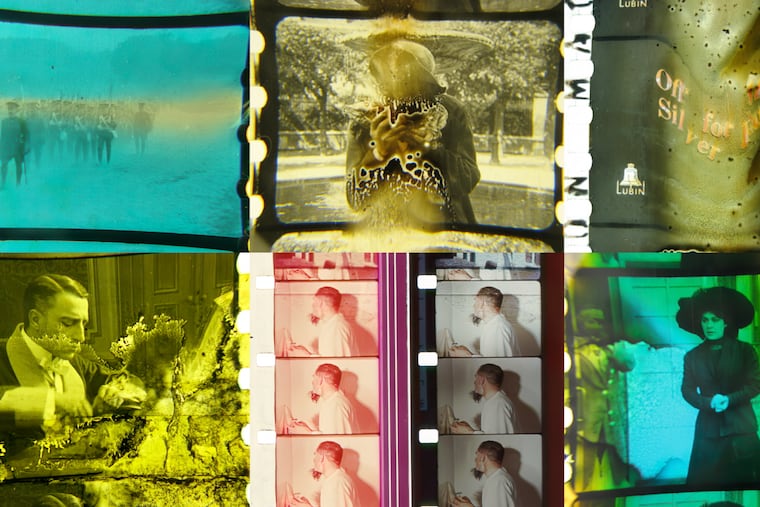Films degrade over time. These Philadelphians are saving them.
Inés Toharia's documentary, “Film, the Living Record of Our Memory” is an homage to archivists and preservationists. It plays at UArts’ Lightbox Film Center on March 31.

A few years ago, Jesse Pires got a phone call. It was someone from Bucks County Community College, in nearby Newtown, calling the curator and director of Philadelphia’s Lightbox Film Center. They had a collection of 16mm film prints they were looking to unload, and the Lightbox was their last hope. Otherwise, they’d all end up in a dumpster.
Pires and the staff at the Lightbox rescued the collection, which included gems from experimental filmmaker Bruce Conner (best known for his 1958 collage film called, simply, A MOVIE) and animator John Whitney, who collaborated with Saul Bass on the iconic opening credits for Alfred Hitchcock’s Psycho.
The notion that such a rich, varied film archive could simply be deposited in the trash may strike many cinephiles as sacrilegious. But as the documentary Film, the Living Record of Our Memory (which screens at the Lightbox on Friday, March 31) reminds us, so much of cinema was squandered in precisely this way. In its early decades, movies were taken about as seriously as funny books, and were just as disposable. So much of cinema’s earliest history was binned, burned, or otherwise lost to time.
The 2021 doc captures the anxiety around the medium’s frailty with powerful images that seem to substantiate claims of cinema’s demise. Crumbling strips of celluloid are captured in various states of decomposition; some are hopelessly brittle. Others are moldy, and outright fungal. Some coagulate together, such that a whole film reel looks like a blackened, lopsided doughnut. It’s not just that movies have lost their central place in the culture. It’s that the material of film — the very stuff of cinema — is festering, in real time.
“We’re used to going to see films,” said director Inés Toharia, speaking from her home a few hours north of Madrid, “But all this backstage work is fundamental to preserving what we have access to.” She began working on the film years ago, after touring a film archive in Barcelona.
Film, the Living Record pays tribute to archivists and preservationists working tirelessly (and thanklessly) to beat back the death of the medium they love. From technicians to cinematheque programmers hosting festivals dedicated to nitrate (the highly volatile early film stock that was famous for spontaneously combusting, leading to fires that burned off whole swaths of silent film history), the documentary makes heroes of cinema’s most unheralded defenders.
Like skilled vintners who can calculate the ideal conditions for aging a fine wine, preservationists are in the business of managing decay. Beyond the inevitable degradation of film stock itself (which is exacerbated when storage conditions aren’t perfectly attuned), film preservation is rarely afforded the money and attention such an expensive, and time-consuming, process demands.
For Pires, the work of preservation proves vital to the business of exhibition. For more than a century, he explained, screening celluloid was the gold standard. “For years, it was hard to replicate that quality of the image,” he said. “VHS and DVD could barely touch it. But technology kept advancing to the point where we can exhibit digitally, and audiences are not going to balk at the quality.”
As evinced by his own loving restoration of college film class castoffs, Pires remains deeply committed to those “legacy” film formats.
“Nothing really lasts,” Toharia mused. “But I’m optimistic. People still love watching films, and learning through them. And not just fiction: scientific films, educational films, industrial films, commercials, home movies. All of it enriches us.”
Viewed in a less despairing light, even Toharia’s haunting images of fetid celluloid breaking up like bad blue cheese carry faint whiffs of optimism. If film can truly wither and die, then that means it’s still alive.
“Film, the Living Record of Our Memory” plays March 31 at Lightbox Film Center, 401 South Broad St., Philadelphia. https://lightboxfilmcenter.org/programs/film-the-living-record-of-our-memory